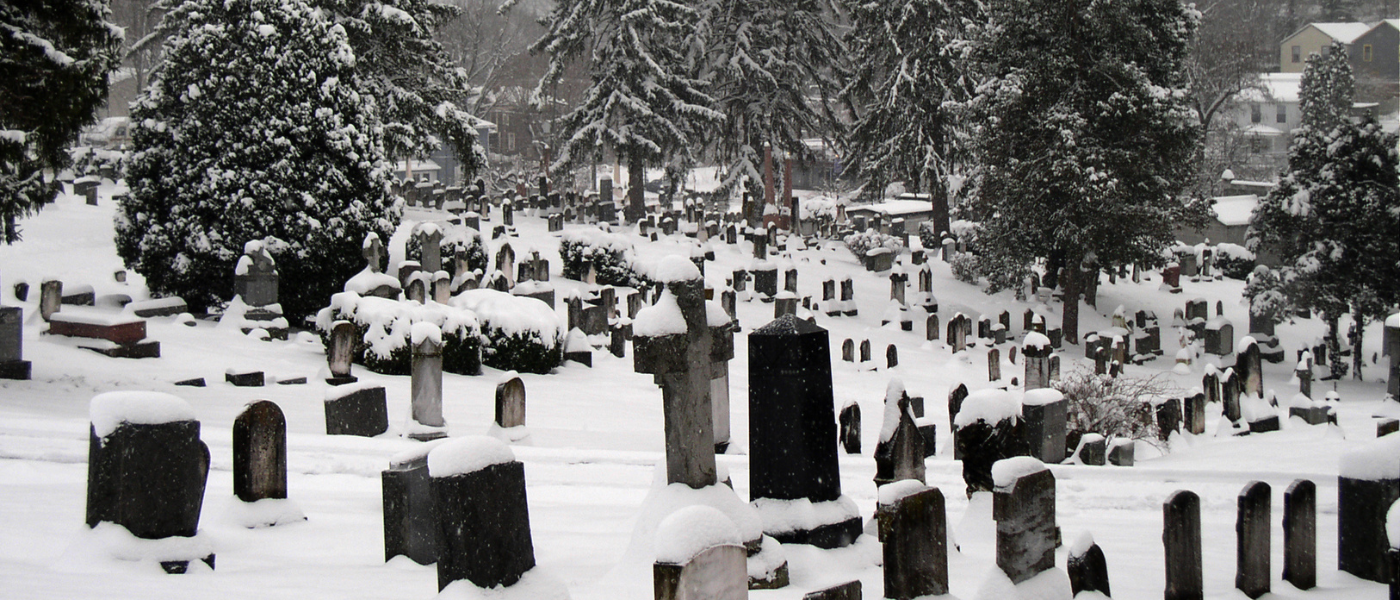Digging a Grave in Frozen Ground
Winter burials in areas where snow falls can be a challenge, particularly in northern states. Digging a grave when the ground is frozen is a much different task than it is during the summer months, but technological advances can help ease the backbreaking burden.
Sometimes, to access the ground at all, substantial amounts of snow may need to be removed, possibly in inclement weather. Snow on the site to be dug presents a mixed bag of issues: the more snow, generally, the greater insulation to the ground, so it may not freeze quite as far down as it would without the snow. On the other hand, you need to be able to get to the ground to dig, which requires removing the snow, and that may mean shoveling, sometimes a lot of it. This can lead to frostbite, muscle strains, or other injuries.
Completing the job almost always takes longer. There are also increased safety issues: more injuries happen, and tools break more easily on frozen ground.
Some of the more common tools for the job:
- Jackhammer
A jackhammer is a trusty sidekick. The process takes some time, as you’re loosening the soil bit by bit, but if a winter burial is a high priority, this is one of the methods by which that can happen.
Outlining the site then digging across the area rather than downward allows for breaking up the top layer of ice, which sometimes makes it possible to finish the job with a backhoe.
Duration of dig by this method: Approximately 1 foot/hr. In northern states, frost can descent as much as four feet. The deeper it goes, the longer the job will take. In the words of Minnestoa gravedigger Matt Goeden: “Four feet doesn’t take four hours, more like six.”
Don’t forget to account for backhoe time.
- Grave Burner/ Frost Thawer
A sort of stove resembling an oil barrel, heated by propane, is placed directly upon the frozen ground. The grave burner can heat up the soil enough to complete the dig by backhoe. Some rather sophisticated versions of these are commercially available, reportedly portable enough to carry in the back of a pickup, and capable of being maneuvered by a single person.
Duration of dig by this method: A few hours to overnight, depending on depth of frost and weather.
- Heaters of various types
It takes longer, but simple electric heaters or even lit bags of charcoal are sometimes used.
Duration of dig by this method: Give it 24 hours before you try to dig.
- Ground-thawing Blankets
A popular choice, there are several types of ground-warming blankets available for gravesite digging. Powered by either electricity or generator, such blankets a preferred option because they can handle snow removal as well as frost-thawing. Sometimes used in construction.
Duration of dig by this method: 3-18 hours, depending on snow and frost depth.
- Frost Teeth
Probably familiar to all, and the most old-school of the methods is frost teeth, the fang-like attachments make specifically for attachment to backhoes. Works by brute force; not effective everywhere.
Duration of dig by this method: About an hour.
As for Winter Graveside Services…
Bad weather can affect the safety of driving conditions for mourners attempting to reach the cemetery for a winter graveside service, and can also play a major role at the graveside. Some precautions can make the experience safer, such as laying down carpeted pathways to avoid or eliminate slippery surfaces.
At the end of the day, whatever the practical considerations, the most important consideration is that it’s still about someone’s funeral, and a family’s mourning. Leaving a grave undug for a spring burial can be an excruciating prolongation of suffering the survivors.




